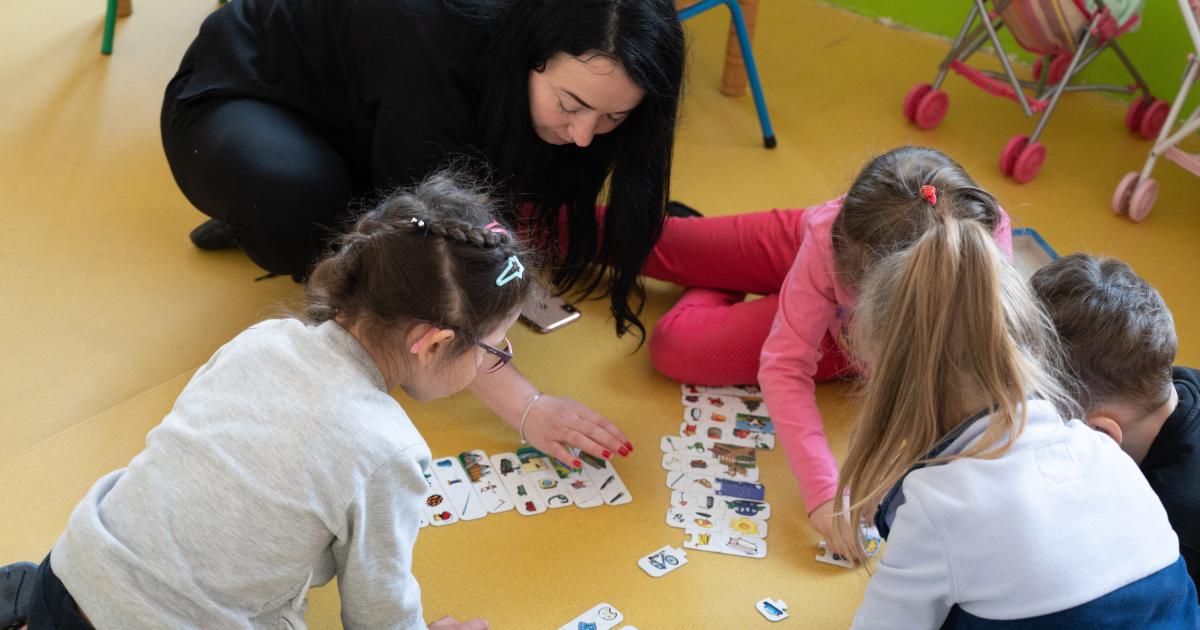The following is an overview of the structure and financing of pre-school education in Austria:
OFFER: According to Statistics Austria, there were around 8,600 institutional childcare facilities in Austria in the 2020/21 care year. A little more than half of these were kindergartens (around 4,600; for children from the age of 2.5 or three until they started school). Around 2,400 of the facilities were crèches (for under-threes) and 1,600 mixed-age facilities (between 1.5 and 15 years old, age limits vary depending on the federal state). A total of almost 323,000 children were cared for in these facilities. A very small proportion of the children are also cared for by childminders.
EXPENDITURE: According to the OECD study “Education at a Glance”, around 0.7 percent of GDP is currently invested in elementary education in Austria. That is less than the average for the EU (0.8 percent) and the OECD (0.9); PISA leaders such as Estonia or Finland even spend around 1.2 percent of GDP on preschool education. Expenditure in Austria has risen significantly over the years: According to an analysis by the Center for Administrative Research (KDZ), the federal states and municipalities spent 2.9 billion euros in 2019. In 2007, before the first 15a agreement, it was still 1.3 billion. Personnel expenses rose particularly sharply during this period (98 percent).
OPERATOR: According to children’s day-care center statistics, 57 percent of the childcare facilities are operated by public authorities (mainly municipalities), the other providers are mainly private associations and religious communities. In Vienna, as many as 72 percent of the facilities have private providers.
SUPPORT RATE: Among the three to five-year-olds, the Barcelona target (90 percent childcare rate) has now been achieved with almost 93 percent, although the values vary depending on the federal state (88.2 percent in Styria, 97.3 in Lower Austria). The childcare rate for children under the age of three is 28 percent, which means that the Barcelona target of 33 percent set by the EU in 2002 has still not been reached.
FINANCING: According to the KDZ analysis, the municipalities bear around two thirds of the expenses. Most of the money goes to community-owned facilities, the rest as a subsidy to private childcare facilities. The federal states co-finance educational staff, only in Lower Austria are staff provided directly by the state. The municipalities receive federal and state subsidies for additional costs arising from the expansion of the offer (increase in childcare quotas, language support). Another source of funding are parental contributions (e.g. for food, handicraft materials).
GROUP SIZE: The countries specify the maximum number of children that can be in a group. According to the KDZ, the average group size for under-threes is between eight (in Salzburg) and 16 (in Vorarlberg), and for older children between 17 (in Lower Austria) and 23 (in Carinthia).
COMPETENCE DISTRIBUTION: The personal, financial and pedagogical conditions are determined by the federal states. The federal government is only responsible for the training of kindergarten teachers. In terms of framework conditions, it only has a coordinating function, for example through the educational framework plan issued in 2009, a guideline for promoting children. The daycare providers are responsible for putting these requirements into practice. At 57 percent, these are public providers, above all the municipalities. The municipalities are also fundamentally responsible for the expansion of childcare offerings, while the federal and state governments are sponsors.
AVAILABILITY: According to the KDZ, only 55 percent of the children attended a facility in 2020/21 that met the criteria of the compatibility indicator for family and work (VIF) (offers from Monday to Friday, opening hours of at least 45 hours a week and at least 9.5 hours on four days, offer of lunch). In Vienna, 94 percent attend such facilities, the fewest in Upper Austria (25 percent) and Tyrol (40). On average, kindergartens in Austria are closed 23.3 days a year, crèches 13.7.
15a AGREEMENT: Since 2008, the federal government has contributed to the costs of the kindergartens through federal-state agreements, and the funding is tied to specific goals. So far, these have been the free compulsory kindergarten year, expansion of the offer, early language support, in the currently expiring agreement (2018-2021) also more offers for under-threes, more flexible opening times and improved framework conditions. Increased monitoring of the use of funds was also agreed, but the Court of Auditors sees room for improvement here. The government has already promised more money for the new agreement, for which negotiations have not yet started. In terms of content, the focus is once again on extended and more flexible opening times, more places for under-threes and early language support. Also announced were clear funding and billing criteria, a clear distribution key and a merger of the language support concepts of the nine federal states and a possible introduction of uniform minimum quality standards.
–


